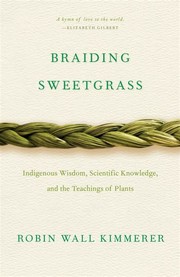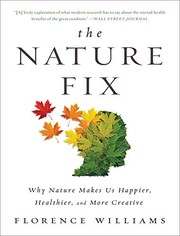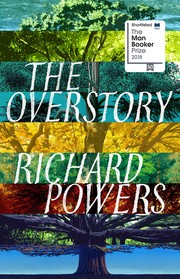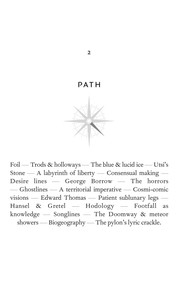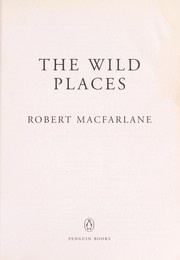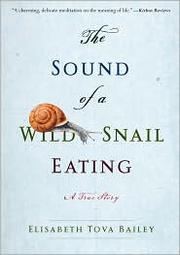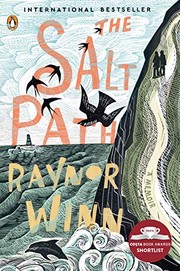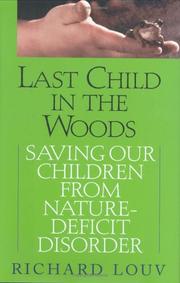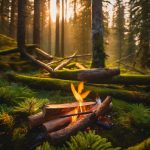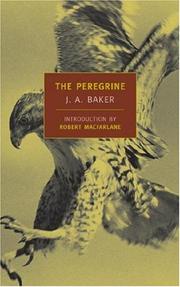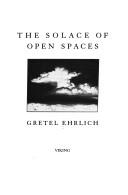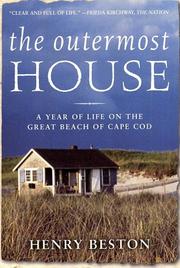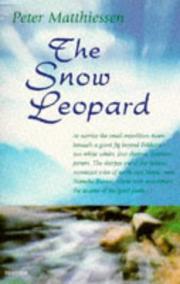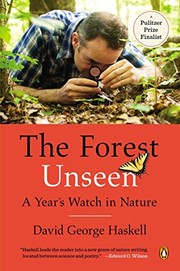Are you looking to deepen your connection with nature? There’s no better way to do so than by delving into the pages of a book on connecting with nature. Whether you’re seeking inspiration for outdoor adventures or hoping to cultivate a greater appreciation for the natural world, these 20 best connecting with nature books will open your eyes to the beauty and wonder of the great outdoors.
Contents
- 1 20 Best Books About Connecting With Nature
- 2 The Hidden Life of Trees
- 3 Braiding Sweetgrass
- 4 The Nature Fix
- 5 The Overstory
- 6 The Old Ways
- 7 The Wild Places
- 8 The Sound of a Wild Snail Eating
- 9 The Salt Path
- 10 The Last Child in the Woods
- 11 The Moth Snowstorm
- 12 The Peregrine
- 13 The Living Mountain
- 14 The Solace of Open Spaces
- 15 The Outermost House
- 16 The Snow Leopard
- 17 The River Why
- 18 The Forest Unseen
- 19 The Invention of Nature
- 20 Last Child in the Woods
- 21 A Sand County Almanac
- 22 Conclusion
- 23
- 24 Top 20 Best Books on Intellectual Disabilities:2024 Edition
- 25 Reading List of Microbes Books – 2024 Update
- 26 Explore 20 Best Whales Books with Our 2024 Update
20 Best Books About Connecting With Nature
The Hidden Life of Trees
by Peter Wohlleben
The Hidden Life of Trees by Peter Wohlleben is a captivating book about connecting with nature that takes readers on a journey into the intricate world of trees. Wohlleben shares his profound insights and discoveries about the social, communal, and complex lives of trees, revealing how they communicate, nurture their young, and form supportive networks. Through this immersive exploration, readers will gain a deeper understanding and appreciation for the natural world, as well as a renewed sense of wonder and awe for the interconnectedness of all living beings. Whether you’re a nature enthusiast or simply curious about the mysteries of the forest, this book on connecting with nature will inspire you to look at trees in a whole new light and foster a deeper connection with the natural world.
Braiding Sweetgrass
by Robin Wall Kimmerer
Braiding Sweetgrass by Robin Wall Kimmerer is a captivating book about connecting with nature. Kimmerer, a botanist and member of the Citizen Potawatomi Nation, weaves together indigenous wisdom, scientific knowledge, and personal experiences to explore our relationship with the natural world. Through lyrical prose, she shares the teachings of plants and animals, offering a powerful reminder of our interconnectedness with the earth. This book is a celebration of the gifts of the land and a call to honor and protect the environment. It invites readers to contemplate their own connections to the natural world and to consider how they can live in harmony with the Earth. Braiding Sweetgrass is a thought-provoking and deeply moving exploration of our place in the web of life, making it a must-read for anyone interested in deepening their relationship with the natural world.
The Nature Fix
by Florence Williams
The Nature Fix by Florence Williams is a captivating book on connecting with nature and its profound impact on our well-being. Through engaging storytelling and scientific research, Williams explores the restorative power of nature and its ability to enhance our mental and physical health. She delves into the various ways in which immersing ourselves in natural environments can reduce stress, improve creativity, and boost overall happiness. The book also highlights the importance of incorporating nature into our urban lives and offers practical tips for reaping the benefits of spending time outdoors. Whether you’re a nature enthusiast or simply curious about the science behind our innate connection to the natural world, this book about connecting with nature is sure to inspire and enlighten.
The Overstory
by Richard Powers
The Overstory by Richard Powers is a captivating and profound novel that delves into the intricate and interconnected relationship between humans and the natural world. This book is a powerful exploration of our deep connection with the environment, and it weaves together the stories of nine individuals whose lives are all touched by trees in different ways. Through their experiences, Powers skillfully illustrates the beauty, complexity, and significance of the natural world, ultimately highlighting the profound impact that trees have on our lives. The Overstory is a thought-provoking and beautifully written book about connecting with nature that will leave readers with a renewed appreciation for the world around them and a heightened awareness of our responsibility to protect it.
The Old Ways
by Robert Macfarlane
The Old Ways by Robert Macfarlane is a captivating exploration of ancient paths and the act of walking as a way of connecting with nature. In this book, Macfarlane delves into the history and significance of old walking paths, from the chalk downs of England to the ancient tracks of the Himalayas. Through vivid prose and deep research, he illuminates the profound connections between landscapes, people, and the act of walking. The Old Ways is a mesmerizing blend of travelogue, history, and memoir, offering readers a rich and evocative journey through both physical landscapes and the landscapes of the mind. This book about connecting with nature invites readers to slow down, pay attention, and find deeper meaning in the act of walking and the natural world around us.
The Wild Places
by Robert Macfarlane
The Wild Places by Robert Macfarlane is a captivating book about immersing oneself in the natural world. Macfarlane embarks on a journey to discover the remaining untouched landscapes of Britain and Ireland, delving into the wilderness to connect with the untamed beauty of the land. As he ventures into remote regions, he encounters the awe-inspiring power of nature and the profound impact it has on the human spirit. Through vivid prose and evocative descriptions, Macfarlane takes the reader on a mesmerizing exploration of the wild, encouraging a deeper connection with the earth and its untamed spaces. This book on connecting with nature is a celebration of the untamed and an invitation to seek out and cherish the wild places that still exist in the world.
The Sound of a Wild Snail Eating
by Elisabeth Tova Bailey
The Sound of a Wild Snail Eating by Elisabeth Tova Bailey is a captivating book about connecting with nature. After a sudden illness leaves her bedridden, Bailey finds solace in observing a wild snail that has taken up residence on her nightstand. As she watches the snail go about its daily activities, she discovers a deep connection to the natural world and gains a new perspective on life. Through her lyrical prose, Bailey beautifully portrays the intricate and fascinating world of the snail, while also reflecting on her own experiences and the universal themes of resilience and interconnectedness. This poignant and thought-provoking book on connecting with nature invites readers to slow down, appreciate the small wonders of the world, and find beauty in unexpected places.
The Salt Path
by Raynor Winn
The Salt Path by Raynor Winn is a captivating memoir that chronicles the author’s journey walking the South West Coast Path in England. After losing their home and livelihood, Raynor and her husband Moth embark on this challenging 630-mile trek to find solace and purpose. The book delves into themes of resilience, hope, and the healing power of nature, portraying a raw and honest account of their struggles and triumphs along the way. The Salt Path is not just a story of survival, but also a profound book about connecting with nature and finding a sense of belonging in the natural world. Raynor Winn’s evocative writing style and the stunning landscapes she describes make this memoir a truly inspiring and uplifting read for anyone seeking a deeper connection with the outdoors.
The Last Child in the Woods
by Richard Louv
The Last Child in the Woods by Richard Louv is a captivating book about the profound importance of children connecting with nature. Louv explores the detrimental effects of nature deficit disorder and the disconnection from the natural world in today’s technology-driven society. Through compelling evidence and personal anecdotes, he highlights the numerous benefits of immersing children in the outdoors, including improved physical and mental health, enhanced creativity, and a deeper sense of wonder and awe. The book serves as a wake-up call for parents, educators, and policymakers to prioritize outdoor experiences for children and to cultivate a love and respect for the environment. With its thought-provoking insights and poignant storytelling, The Last Child in the Woods is a must-read for anyone who values the importance of fostering a strong bond between children and the natural world.
The Moth Snowstorm
by Michael McCarthy
The Moth Snowstorm by Michael McCarthy is a captivating book about connecting with nature. McCarthy takes readers on a journey through the beauty of the natural world, sharing his personal experiences and profound insights. Through vivid storytelling and poetic prose, he explores the deep connection between humans and the environment, and the impact of losing touch with nature in our modern society. The book is a powerful call to action, urging readers to rekindle their relationship with the natural world and to appreciate its wonders. McCarthy’s passion for the environment shines through in every page, making The Moth Snowstorm a compelling and thought-provoking read for anyone who longs to reconnect with the earth.
The Peregrine
by J.A. Baker
The Peregrine by J.A. Baker is a captivating book about connecting with nature that follows the author’s obsession with observing peregrine falcons in the English countryside. Through poetic prose and meticulous detail, Baker takes the reader on a journey as he immerses himself in the wild and untamed landscape, capturing the essence of the birds’ fierce and graceful existence. The book delves into the author’s deep connection with nature, portraying the raw beauty and brutality of the natural world. With vivid descriptions and a profound sense of reverence for the environment, The Peregrine is a mesmerizing exploration of the human spirit’s yearning to be at one with the wild. This classic work of nature writing is a must-read for anyone seeking to be transported to the heart of the natural world.
The Living Mountain
by Nan Shepherd
The Living Mountain by Nan Shepherd is a captivating book on connecting with nature that beautifully captures the essence of the Scottish Highlands. Through lyrical prose, Shepherd invites readers to immerse themselves in the natural world, exploring the mountains, rivers, and wildlife with a deep sense of wonder and reverence. She delves into the sensory experience of being in nature, describing the sights, sounds, and textures of the landscape in exquisite detail. The book is a poetic meditation on the interconnectedness of all living things and the profound impact that the natural world can have on the human spirit. Shepherd’s profound insights and keen observations make The Living Mountain a timeless and enchanting read for anyone seeking to deepen their connection with the natural world.
The Solace of Open Spaces
by Gretel Ehrlich
The Solace of Open Spaces by Gretel Ehrlich is a captivating memoir that immerses readers in the rugged landscapes of Wyoming. Ehrlich’s lyrical prose beautifully captures the raw beauty of the natural world, offering a poignant reflection on the human experience and the healing power of wilderness. This book on connecting with nature explores the author’s deep connection to the land, the people, and the animals that inhabit it, providing a profound insight into the transformative effect of the natural environment on the human spirit. Ehrlich’s evocative descriptions and keen observations make this book about connecting with nature a compelling read for anyone seeking solace and inspiration in the great outdoors.
The Outermost House
by Henry Beston
The Outermost House by Henry Beston is a classic book about connecting with nature. In this timeless masterpiece, Beston recounts his year-long stay in a small cottage on the dunes of Cape Cod. Through vivid and poetic prose, he describes the beauty and wonder of the natural world, from the changing seasons to the diverse wildlife that inhabits the coastal landscape. Beston’s deep appreciation for the environment and his profound connection to the land and sea are evident on every page. The Outermost House is a captivating and inspiring read that will transport you to the serene and awe-inspiring setting of the outermost beach, leaving you with a newfound appreciation for the world around you.
The Snow Leopard
by Peter Matthiessen
The Snow Leopard by Peter Matthiessen is a captivating book about connecting with nature that takes readers on a mesmerizing journey through the Himalayas. This poignant memoir chronicles the author’s spiritual quest and his expedition to the remote mountains of Nepal in search of the elusive snow leopard. Amidst the stunning landscapes and rugged terrain, Matthiessen delves into the depths of his own soul, grappling with grief and seeking solace in the natural world. Through vivid prose and introspective reflections, he beautifully captures the transcendent beauty of the wilderness and the profound impact it has on the human spirit. The Snow Leopard is a profound exploration of the human-nature connection, offering a deeply immersive and thought-provoking experience for anyone seeking to deepen their connection with nature.
The River Why
by David James Duncan
The River Why by David James Duncan is a coming-of-age novel that immerses readers in the beauty of the natural world. This book on connecting with nature follows the story of Gus Orviston, a young man who decides to escape the chaos of the modern world and find solace in the tranquility of nature. As he embarks on a journey of self-discovery, Gus learns valuable lessons about life, love, and the interconnectedness of all living things. Through vivid descriptions and heartfelt storytelling, the author transports readers to the rivers, forests, and mountains, making them feel as though they are experiencing the wonders of nature firsthand. This book about connecting with nature is a captivating ode to the power and healing qualities of the natural world, and a must-read for anyone seeking a deeper connection to the environment.
The Forest Unseen
by David George Haskell
The Forest Unseen by David George Haskell is a captivating book on connecting with nature. Through the lens of a small patch of forest, Haskell takes readers on a journey of discovery, exploring the interconnectedness of the natural world. From the microscopic organisms in the soil to the majestic trees reaching for the sky, he delves into the complex web of life that exists within this seemingly simple ecosystem. With lyrical prose and keen observations, Haskell invites readers to slow down and truly see the beauty and complexity of the natural world. This book about connecting with nature offers a thought-provoking and inspiring exploration of the wonders that surround us, encouraging a deeper appreciation and understanding of the world outside our doorsteps.
The Invention of Nature
by Andrea Wulf
The Invention of Nature by Andrea Wulf is a captivating book about the life and adventures of Alexander von Humboldt, a visionary naturalist and explorer. Wulf’s vivid and engaging narrative takes readers on a journey through Humboldt’s groundbreaking discoveries and his passion for understanding the interconnectedness of nature. This remarkable biography is not just a book about connecting with nature, but a testament to Humboldt’s pioneering spirit and his belief in the unity of all living things. Wulf’s vivid storytelling and meticulous research bring to life the story of a man who revolutionized our understanding of the natural world. The Invention of Nature is a must-read for anyone who is passionate about the environment and the beauty of the natural world.
Last Child in the Woods
by Richard Louv
Last Child in the Woods by Richard Louv is a captivating exploration of the impact of nature deficit disorder on children and the importance of reconnecting with the natural world. Louv’s book on connecting with nature delves into the benefits of outdoor experiences for mental, emotional, and physical well-being, while also highlighting the alarming trend of children spending less time in nature. Through compelling research and personal anecdotes, Louv makes a compelling case for the vital role of nature in childhood development, and offers practical solutions for parents and educators to foster a deeper connection with the natural world. This engaging and thought-provoking book about connecting with nature serves as a powerful reminder of the profound impact that time spent in the great outdoors can have on our lives.
A Sand County Almanac
by Aldo Leopold
A Sand County Almanac is a book on connecting with nature, written by renowned conservationist Aldo Leopold. This classic work of environmental literature takes readers on a journey through the seasons, offering observations and reflections on the natural world. Through Leopold’s lyrical prose and keen insights, readers gain a deeper appreciation for the interconnectedness of all living things and the importance of conservation. The book is a poignant reminder of the beauty and fragility of the natural world, and it inspires readers to develop a more profound connection with nature. A Sand County Almanac is a timeless and thought-provoking book about connecting with nature that continues to resonate with readers today.
Conclusion
In conclusion, these 20 best books about Connecting With Nature offer a diverse and insightful perspective on the profound and enriching relationship between humans and the natural world. Whether you are seeking inspiration, knowledge, or a deeper connection with nature, these books provide a wealth of wisdom and experiences that will surely resonate with any nature enthusiast.
Which Connecting With Nature book is best?
The best book on Connecting With Nature can vary with personal preference, but three widely recommended titles are:
- The Hidden Life of Trees by Peter Wohlleben,
- Braiding Sweetgrass by Robin Wall Kimmerer,
- The Nature Fix by Florence Williams.
Each offers valuable insights and could be a great starting point.
What are the best books to learn about Connecting With Nature?
For those looking to learn about Connecting With Nature, there is a wealth of literature that can provide a comprehensive understanding of the subject. Some of the most highly recommended books include:
- The Hidden Life of Trees by Peter Wohlleben,
- Braiding Sweetgrass by Robin Wall Kimmerer,
- The Nature Fix by Florence Williams,
- The Overstory by Richard Powers,
- The Old Ways by Robert Macfarlane,
- The Wild Places by Robert Macfarlane,
- The Sound of a Wild Snail Eating by Elisabeth Tova Bailey,
- The Salt Path by Raynor Winn,
- The Last Child in the Woods by Richard Louv,
- The Moth Snowstorm by Michael McCarthy
These books offer a range of perspectives on Connecting With Nature, covering various aspects and approaches to the subject.
What are the best books on Connecting With Nature?
The best books on Connecting With Nature include:
- The Hidden Life of Trees by Peter Wohlleben,
- Braiding Sweetgrass by Robin Wall Kimmerer,
- The Peregrine by J.A. Baker,
- The Living Mountain by Nan Shepherd,
- The Salt Path by Raynor Winn,
- The Wild Places by Robert Macfarlane.
Each offers unique insights into the subject. While these books on the topic of Connecting With Nature are highly regarded, it’s important to note that any list of ‘best’ books is subjective and reflects a range of opinions.
What are the best Connecting With Nature books of all time?
Choosing the best Connecting With Nature books of all time can vary depending on who you ask, but seven titles that are often celebrated include
- The Hidden Life of Trees by Peter Wohlleben,
- Braiding Sweetgrass by Robin Wall Kimmerer,
- The Old Ways by Robert Macfarlane,
- The Salt Path by Raynor Winn,
- The Moth Snowstorm by Michael McCarthy,
- The Living Mountain by Nan Shepherd,
- and The Peregrine by J.A. Baker.
Each of these books has made a significant impact in the field of Connecting With Nature and continues to be influential today.


